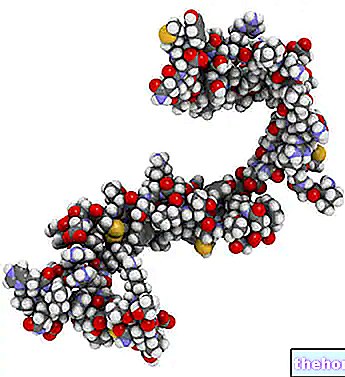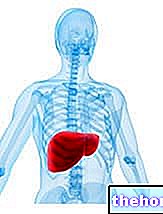Premise
So far we have given the general definition of thrombocytopenia, focusing on the related pathological consequences and the main causes: in this article we will describe in detail the thrombocytopenia gravidarum and that induced by pharmacological substances. Finally, we will briefly analyze the effective therapies to definitively fight - when possible - this problem.
Drug-induced thrombocytopenia
In the previous discussion we have seen how the excessive intake of some drugs can be responsible for thrombocytopenia.
It is not uncommon for drug-induced thrombocytopenia to escape diagnosis, for at least two reasons:
- the triggering causes involved in the reduction of blood platelets are numerous and varied
- the drugs responsible for thrombocytopenia are many, probably hundreds
In the light of these considerations, it is clear that the therapy of choice to cure the disease is not exactly the most correct one; drug-induced thrombocytopenia is often confused with the autoimmune form. Similarly, especially in hospitalized patients, symptoms derived from iatrogenic thrombocytopenia are interpreted as a consequence of sepsis or aortic / coronary bypass.
Among the drugs most involved in thrombocytopenia are mentioned: heparins (especially), quinine, platelet inhibitors in general (eg. Eptifibatide), vancomycin, antimicrobials in general, antirheumatics, diuretics (eg. Chlorothiazide), analgesics (paracetamol, Naproxen, diclofenac) , chemotherapy and, more generally, all synthetic substances capable of promoting the formation of anti-platelet antibodies.
It is estimated that every year about 10 people per million people are affected by drug-induced thrombocytopenia.
Symptoms
The majority of patients diagnosed as platelet-related do not generally complain of severe symptoms: more often than not, they present with petechial haemorrhages and mild bruising. Cases of humid purpura, which require platelet transfusions and / or administration of corticosteroids, are rare, although possible.
In any case, except in extreme cases, drug-induced thrombocytopenia can be fought simply by stopping the intake of that drug: this is clearly possible only when the responsible drug is identified with absolute certainty.
Thrombocytopenia gravidarum
Cases of mild thrombocytopenia have also been recorded in pregnant women: it is estimated that in 10% of future mothers there is a physiological reduction in platelets during pregnancy. However, it should be noted that, under normal conditions, the platelet count almost always remains within the physiological range.
The reduction in the blood level of thrombocytes can be triggered by many factors, including gestational thrombocytopenia: from a clinical point of view, we are talking about a benign form, which does not involve any harm to the fetus or to the mother.
Sometimes, the woman suffers from thrombocytopenia even before pregnancy; at other times, the lack of platelets in the blood is diagnosed only during gestation, even if it was already present before pregnancy. Like any pathology, there are also other much more serious causes, responsible for gestational thrombocytopenia: thrombotic microangiopathies and HELLP syndrome, diseases that are sometimes so serious as to be fatal; those just described clearly remain extreme cases, so the probability that thrombocytopenia will give a fatal outcome is still low.
In the case of severe gravidar thrombocytopenia, therapeutic measures must be immediate and at the same time aggressive, in order to cause as little harm as possible to both the mother and the fetus.
Only in the case of severe thrombocytopenia (platelets <30,000 per mm3) are pregnant women subjected to cortisone during gestation and immunoglobulins shortly before delivery.
Diagnosis and therapies
In general, when a patient is diagnosed with a form of thrombocytopenia in the absence of pathologies, it is good to distinguish the actual disease from a possible "false alarm": in this case we speak of pseudoplatinopenia, a possible event resulting from a laboratory error related to the use of EDTA as an anticoagulant substance. In order to overcome this drawback, it is advisable to repeat the examination using different diagnostic techniques.
A patient hypothetically suffering from thrombocytopenia is generally subjected to palpation of the spleen; again, an ultrasound or CT scan can be done to ensure the diagnosis.
Sometimes, laboratory tests are indispensable, such as thyroid function, antibody-platelets, antibody-phospholipids, etc.
It is also possible to accurately identify the platelet elimination / decline locus using radioisotopic methods. Furthermore, in the case of presumed thrombocytopenia, a complete blood count can be performed, useful for highlighting any defects affecting the marrow.
In some cases, a bone marrow biopsy is recommended, which is useful to check for an increase or decrease in the number of megakaryocytes.
As far as therapies are concerned, we have seen that in the case of drug-induced thrombocytopenia it is necessary to suspend the drug responsible; platelet transfusion is reserved for severe cases (<10,000 platelets / mm3). The administration of cortisone, immunoglobulins and immunosuppressants is useful in chronic forms of thrombocytopenia.
Other articles on "Thrombocytopenia: Causes and Therapy"
- Thrombocytopenia
- Thrombocytopenia - Medicines for the treatment of thrombocytopenia
- Thrombocytopenia in brief, Summary of thrombocytopenia




























